
Daejeon is South Korea's fifth-largest metropolis, with a population of 1.5 million as of 2019. Located in a central lowland valley between the Sobaek Mountains and the Geum River, the city is known both as a technology and research center, and for its close relationship with the natural environment. Daejeon serves as a hub of transportation for major rail and road routes, and is approximately 50 minutes from the capital, Seoul, by KTX or SRT high speed rail.

Yongin is a city in the Seoul Capital Area, the largest in Gyeonggi Province, South Korea. With a population over 1 million, the city has developed rapidly since the 21st century, recording the highest population growth of any city in the country. Yongin is home to Everland and Caribbean Bay, South Korea's most popular amusement and water parks. The city is also home to the Korean Folk Village, the largest of its kind. Yongin-si is a multi-nuclear city with multiple urban centers, not a single nuclear structure, and Giheung-gu crosses the Yeongdong Expressway and Dongbaek, while Suji-gu crosses Pungdeokcheon Stream and Jukjeon.

South Korea is made up of 22 first-tier administrative divisions: 6 metropolitan cities, 1 special city, 1 special self-governing city, and 14 provinces, including three special self-governing provinces and five claimed by the ROK government. These are further subdivided into a variety of smaller entities, including cities, counties, districts, towns, townships, neighborhoods and villages.

Seongnam is the fourth largest city in South Korea's Gyeonggi Province after Suwon and the 10th largest city in the country. Its population is approximately one million. It consists of three administrative districts: Bundang-gu, Jungwon-gu, and Sujeong-gu.
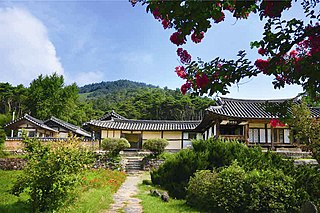
Nonsan is a city in South Chungcheong Province, South Korea. It is located at 36°12′N127°5′E. The origin of Nonsan's geographical names is said to have come from the small garden " Nolmoe, " which rises in the middle of farming fields, where rice paddies and mountain are said to reflect geographical features. The city belongs to the Daejeon Metropolitan Area.
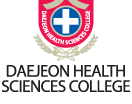
Daejeon Health Sciences College (Korean: 대전보건대학교) is a technical college providing training in the health sciences in South Korea. It is located in the Dong-gu district of Daejeon metropolitan city. The college carries a maximum enrollment of about 3,700. The current president is Lee Gang-o (이강오).

Seo District (Seo-gu) is a gu ("district") of Daejeon, South Korea. Daejeon Metropolitan City Hall is also located there.
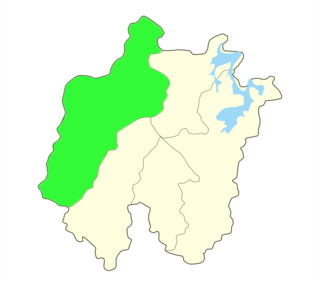
Yuseong District (Yuseong-gu) is a gu ("district") of Daejeon, South Korea, known for high tech industries, Daejeon Expo '93, Daedeok Science Town and the Yuseong Special Tourism District. Daejeon Islamic Center is also located in Kung-dong, Yuseong-gu. The Science Town is the core of the International Science and Business Belt.
Daedeok Innopolis, formerly known as Daedeok Science Town, is the research and development district in the Yuseong-gu district in Daejeon, South Korea. The plan to concentrate research institutes and universities was made in 1967 and president Park Chunghee approved subsequent master planning in 1973. Now the district contains over 20 major research institutes and over 40 corporate research centers. There are 232 research and educational institutions to be found in Daejeon, many in the Daedeok region, among them the Electronics and Telecommunications Research Institute and the Korea Aerospace Research Institute. A number of IT venture companies have sprung up in this region due to the high concentration of Ph.Ds in the applied sciences. Korea has invested heavily in building up the research expertise for over 30 years, creating long-term research programs. Over 17,000 PhD researchers are in the sciences in Daedeok and it had the most application for patents during 2000–2011 among the National Industrial Complex.
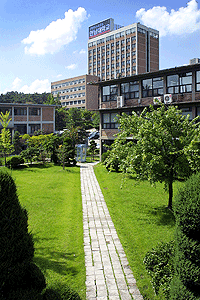
Hannam University (한남대학교) is a private Christian university in Daejeon, South Korea. It was founded in 1956 by American missionaries of the Presbyterian Church (USA). Courses are offered in Korean and English.

The Daejeon Museum of Art is located at 396 Mannyeon-dong, Seo-gu, across the river from the Expo Science Park, in Daejeon, South Korea. It opened on April 15, 1998.

Deogyang-gu (Korean: 덕양구) is a gu (ward) in Goyang, South Korea.

Bupyeong District is one of the 10 administrative divisions that comprise Incheon, South Korea. Bupyeong-gu comprises an area of 12.35 square miles, and has a population of 508,587. It is located north of Namdong-gu, east of Seo-gu, and south of Gyeyang-gu. The city of Bucheon, in neighboring Gyeonggi Province, comprises its eastern limit.

Dong District is a district in Daejeon, a metropolitan city in South Korea. Dong-gu consists of a total of 16 dongs, including Yongun-dong, Hyo-dong, and Sannae-dong.
Shintanjin is a city located north of Daejeon, South Korea. This city is famous for the biggest cigarette factory in Korea, especially the ESSE brand, the best seller in the superslim cigarette category overseas. Although it's a suburb of Daejeon, there is a train station connecting other cities and Seoul. In April, there is an annual cherry blossom festival near the famous cigarette factory. There are many motels and pubs around the train station. There is a big famous dam near this town.
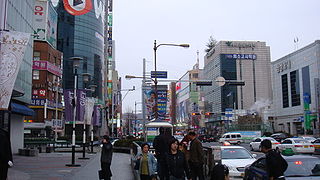
Jung District is a gu in southern central Daejeon, South Korea. The population is 227,108 as of 2022. It consists of 17 branches including Sunhwa-dong, Mokdong, Jungchon-dong, Daeheung-dong, Munchang-dong, Seokgyodong, Daesa-dong, Bussa-dong, Sanseong-dong, Yongdu-dong, Yudong-dong, Taepyeong 1 ~ 2 dong, Yucheon 1 ~ 2 dong and Culture 1 ~ 2 dong. The location of the ward office is in Daeheung-dong, Jung-gu.

The Daejeoncheon is a national river of South Korea within the Geum River system, and one of the three major rivers that flow through Daejeon metropolitan city. The river originates within Daejeon, at Mr. Manin and Mt. Bipa, approximately 15km to the south of the city center, and flows to the north through the city's old downtown, dividing the districts of Jung-gu and Dong-gu, before merging with the Yudeongcheon river.
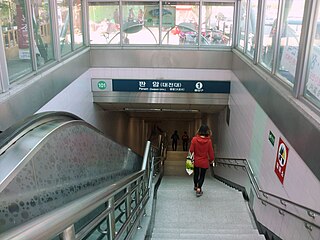
Panam Station is a station of Daejeon Metro Line 1 in Panam-dong, Dong District, Daejeon, South Korea.

Chūseinan-dō, alternatively Chūseinan Province or South Chūsei Province, was a province of Korea under Japanese rule. Its capital was at Taiden (Daejeon). The province consisted of modern-day South Chungcheong, South Korea.
Taejon Christian International School (TCIS) is a Pre-K to Grade 12 international school located in an area known as Techno Valley, a neighborhood in the northern part of Daejeon, South Korea. TCIS is a Three-Programme IB World School and provides boarding care through on-campus dormitory facilities. The school accepts foreign families living locally for work, families living abroad and looking for education in Korea, and local Korean families with connections to foreign culture and education abroad. Taejon Christian International School also plays a partnership role in globalization efforts in the city of Daejeon.




















